Southend Airport

It
was
in
1933
that
Southend-on-Sea
Corporation
purchased
the
land
from
which
in
World
War
I
squadrons
of
the
Royal
Flying
Corps
had
flown
against
the
Zeppelins
and
Gothas
approaching
Essex
from
the
North
Sea,
and
before
anything
more
than
an
enthusiastic
flying
club
could
be
formed
the
Air
Ministry
established
a
unit
of
RAF
Volunteer
Reserve
here
and
earmarked
the
airfield
as
a
satellite
for
Hornchurch
(and
later for North Weald).
18th September 1935: Official opening of the Southend Airport
10:00am Gates open;
Admission Up till 1:30pm Adults 6d, Children 3d, Cars 1s
Admission After 1:30pm Adults 1s, Children 6d
Mayors enclosure: Adults 10/6, Children 5s
11:00 Formation Flying by Southend Flying Club Avro Cadets
11:15 Arrival of Mr C. W. A. Scott
11:30 Autogiro
11:45 Lecture by Mr C. W. A. Scott
12:00 Crazy flying by Capt Glover Southend Flying Club
12:15 Pleasure flights over Southend
12:45
Arrival
by
His
Worship
The
Mayor
of
Southend
&
Rt
Hon
Sir
Philip
Sassoon.
The
Under
Secretary
of
State for Air
12:55 Presentation of Bouquets to the Mayoress & Mrs Webber
1:00 Luncheon Interval
2:30 Official Opening by Sir Philip Sassoon
2:45 Autogiro
3:15
Display
by
Air
Publicity,
aircraft
will
tow
banners
between
150
-
250
feet
in
length
by
4
to
7
feet
high
these can cover up to 600 to 1750 square feet of sky space
3:30 Display of the latest type of high speed fighter by S. A. Thorne of A. V.Role
3:45 Special Surprise item
4:00 Converging Bombing
4:15 Parachutes
4:30 Demonstration of the latest open and closed civil aircraft, including Short Scion & De Havilland DH86 Express
The Astoria Grand Orchestra
4:45 Mannequin Parade
8:00 Illuminations Pleasure Flights
Aircraft displaying included:
Avro Lynx
4x Hawker Heart
Mew Gull
Kings Cup Falcon
From
here
in
1940
Churchill's
illustrious
"few"
battled
with
the
Luftwaffe,
and
it
was
not
until
1946
that
the
corporation
was
able
to
continue
with
its
plan.
On
1st
January
1947,
the
airport
was
at
last
opened
and
licensed
for
traffic.
A
few
months
earlier
though,
on
16th
August
1946,
Sqn
Ldr
Jack
Jones
AFC
had
brought
in
a
Puss
Moth
for
joy-riding
and
to
lay
the
foundation
for
what
is
locally
known as "Southend's own airline" - Channel Airways.
In
March
1947
a
municipal
flying
school
was
started,
followed
by
the
early
flights
of
East
Anglian
Flying
Services
and
the
official
airport
opening
ceremony
in
July.
The
nearness
of
E.
K.
Cole's
radio
and
radar
factories
enabled
the
then
manager
of
the
airport,
Bernard Collins, to liaise over approach aids, and by 1948 airfield lighting and customs facilities were introduced.
The
Berlin
airlift
saw
Halton
transports
of
Bond
Airways
(converted
Halifax
bombers)
being
serviced
by
Aviation
Traders,
who
remained
on
after
the
airlift
ended
to
become
an
integral
part
of
the
airport's
maintenance
organization.
Then
came
the
Channel
air
bridge
with
the
Bristol
freighter,
initiated
by
Air
Charter
Ltd,
associated
with
Aviation
Traders,
and
on
Good
Friday
1955
Captain
Bob
Langley
DFC
(who
flew
Carvairs
of
BUA),
took
the
first
cars
and
passengers
to
Calais,
having
earlier
flown
over
to
dump
the
ramps in France to facilitate off-loading.
Southend
was
expanding
in
many
directions
and
the
trooping
of
sailors,
soldiers
and
airmen
to
Malta
and
Cyprus
by
DC4
Skymasters
was
almost
a
nightly
occurrence.
Then
on
the
morning
of
Christmas
Eve
1958,
as
fog
rolled
across
England,
both
Heathrow
and
Gatwick
airports
ceased
accepting
incoming
airliners.
Until
this
moment
Southend
had
not
been
regarded
as
a
major
diversion
base
by
the
international
operators,
but
within
a
short
space
of
time
more
than
fifty
airliners,
ranging
from
Viscounts
to
DC6As
and
Constellation
749As,
were
most
efficiently
landed
and
the
airport
was
well
and
truly
on
the
world
aviation
map.
The
following
year
Southend
was
second
in
total
movements
(beaten
only
by
Heathrow)
and
third
in
the
country
for
total
freight
tonnage.
BKS
Air
Transport
had
moved
in
to
become
the
airport's
third
resident
airline
and
the
mile
and
a
third
pier
had
taken
second
place,
as
the
town's
major
feature
was
now
definitely
the
coming
and
going
of
aircraft,
whether
the
local
flying
of
light
machines
or
the
arrivals
of
the
huge
Britannias
for
major
overhaul
before
returning
for
their
trooping
schedules
at
Stansted.
Often,
too,
great
air
freighters
left
for
bases
as
far
away
as
Australia,
carrying
supplies
for
the
Woomera
rocket
range
and
the
British
nuclear
tests
at
Maralinga
and
Christmas Island.
In
1961
Channel
Airways
purchased
its
first
four-engined
airliner,
a
DC4
Skymaster,
and
two
years
later,
on
acquiring
Tradair,
another
company,
Channel
introduced
the
Golden
Viscounts
and
invested
enormous
sums
in
a
large
maintenance
base,
today
reckoned
as
a
£500,000 unit in itself.
The
Hawker
Siddeley
748
twin
prop-jets
have
been
added
to
the
growing
fleet,
and
during
Easter
1967
the
smallest
of
the
eighteen
airliners
flying
thousands
of
holidaymakers
to
Channel
Island
and
continental
destinations
was
the
fifty-eight
seater
HS748.
To
this
magnificent
fleet
was
added
four
BAC1-11
eighty-nine
seat
jets
for
regular
flights
to
Malta
and
many
other
European
airports
in
1967,
supported
by
Channel
Airways'
fifty-two
seat
coaches
and
a
growing
interest
in
hotels
and
catering
to
make
the
company
virtually
self sufficient.
British
United
Air
Ferries
were
already
firmly
established
in
Essex,
perhaps
because
of
the
ingenious
conversion
by
Aviation
Traders
Ltd.
of
the
DC4
Skymaster
into
the
now-
famous Carvair, partly achieved at Stansted and partly on Southend Airport.
On
31st
March
1967,
the
last
scheduled
Bristol
freighter
(three
cars
and
sixteen
passengers)
gave
way
to
an
all-Carvair
service
taking
five
cars
and
twenty
two
passengers or an increase to fifty-five passengers at holiday times.
In
addition
BUAF
flew
many
freight
services
as
an
integral
part
of
the
export
drive
(with
a
far-seeing
eye
on
Common
Market
possibilities),
taking
seven
and
a
half
tons
per
trip
of
items
as
varied
as
live
lobsters
(from
Alex
Jarno's
ponds
at
Fambridge)
to
five-ton
ships'
crankshafts
often
in
emergency
to
a
continental
port
where
BUAF
aircraft
enable
a
quick
repair
to
be
quickened.
Baggage
for
our
forces
in
Germany
is
handled
and,
to
offset
the
loss
of
the
old
Thames
steamer
outings
to
Calais
and
Ostend,
negotiations
began
in
February
1967
for
day
and
weekend
excursions
by
BUA
and
Channel
Airways
-
at most reasonable rates.
BKS
Air
Transport
wanted
to
resume
passenger
operations
from
Southend
in
1967,
but
remained
locally
based
as
BKS
Engineering
Ltd
busily
overhauling
Britannias
and
Elizabethans
that
fly
from
Heathrow,
Newcastle
and
Leeds-Bradford
airports
along
with
HS748,
DC3
Dakota
and
Bristol
freighter
aircraft.
One
BKS
engineering
task
was
the
conversion
of
the
Elizabethan
airliner
to
take
eight horse-boxes, and the famous Arkle was flown in a BKS aircraft for a well deserved break in Ireland.
Within
the
mighty
Aviation
Traders
hangars
some
quite
unusual
work
proceeds,
including
the
testing
of
alternators
from
the
BUA
VC10
and
BAC1-11
Gatwick-based
and
Stansted-based
fleets,
and
the
design
and
manufacture
of
seats
for
these
machines
and
the
giant
freight
doors
for
the
VC-10s
and
Britannias,
not
only
for
BUA
but
for
RAF
transport
Command
and
other
operators
of
these
giant aircraft.
Studies
proceeded
into
the
conversion
to
freighters
and/or
car-carriers
of
such
types
as
the
Douglas
DC6
and
DC7
airliners,
using
Rolls-Royce
Dart
engines.
Meantime
the
demands
for
the
locally
designed
and
built
"Hylo"
lifts
and
loaders
used
by
airliners
world
wide
(and
by
the
RAF)
-
helped
to
keep
Aviation
Traders
busy,
despite
the
cut
backs at the time for Carvair flights.
No
operator
at
Southend
airport
-
including
"Laddie"
Marmol
and
his
popular
pleasure
flights
and
the
Rochford
Hundred
Flying
Club,
whose
members
included
well
known
aviation
writer
A.
J.
Jackson,
a
Southend
schoolmaster
and
keen
"Tiger
Club"
pilot
-
would
deny
the
final
word
in
praise
of
Southend-on-Sea's
airport
committee
and
airport
staff.
The
airport
commandant
for
1967,
Mr
Anthony
P.
Cusworth,
first
flew
from
the
airport
as
a
schoolboy
before
joining
the
RAF
in
which
he
flew
with
squadrons
in
Army
Co-operation
(Lysanders)
and
Coastal
(Sunderland
flying-boats)
and
Transport
Commands
during
the
pre-war
and
war
period.
Post-war
he
was
based
at
North
Weald
in
604
(R.Aux.AF)
Sqdn.,
and
after
being
senior
traffic
controller
and
then
deputy
commandant
he
became
commandant
in
1964.
His
progressive
outlook
has
seen
the
airport
grow
in
all
directions
-
the
envy
of
many
airports
throughout
Europe.
Not
least
in
importance
is
the
customs
bonded
freight
shed
owned
and
operated
by
the
corporation,
supplemented
by
a
separate
export
shed
through
which
passed vital cargoes to all parts of the world.
The
fifteen
freight
agencies
that
used
Southend
airport
formed
their
own
association
allowing
for
fast
cargo
transfer
allowing
for
example
a
flight
to
happen
within
a
day
to
Ireland.
It
was
never
intended
as
a
future
ambition
in
1967
to
make
Southend
airport
a
"big
jet"
base,
and
the
twin
engined
HS125
and
the
Lear
executive
jets
along
with
the
BAC1-11s
as
perhaps
the
largest
types
of
that
decade,
although
still
expected
to
fly
at
least
750,000
passengers
in
and
out,
with
70,000
tons
of
freight.
When
one
remembers
that
this
is
the
only
non-state
airport
in
Europe
that
does
not
receive
state
aid
and
operates
at
a
substantial
profit,
to
reduce
the
local
rates
(in
1966
the
profit
was
£100,000
after
deduction
of
taxes,
etc)
we
cannot
but
take
off
our
hats
to
a
truly
inspiring
performance.
The
1914
field
noted
by
the
War
Office
as
an
important
link
in
the
Essex
chain
around
London
saw
in
1967
more
than
250
aircraft
flights
per
day
throughout
summer
and
rarely
fewer
than
eighty
in
the
winter-many
would
help
to
stress Britain's value to the Common Market.
Southend-on-Sea
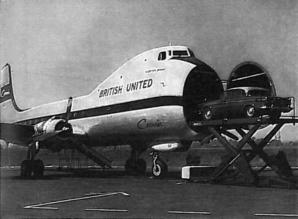
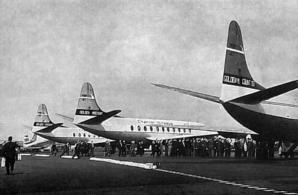
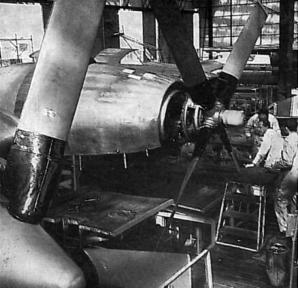
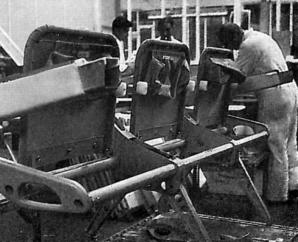
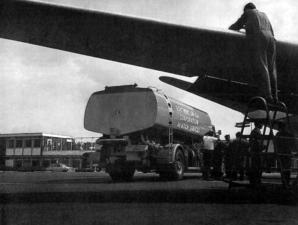
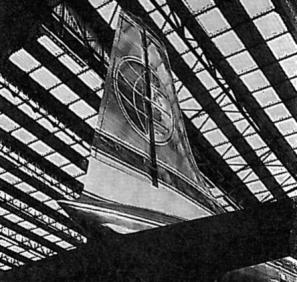
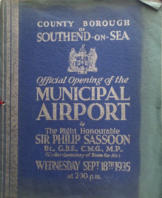
Southend Timeline Southend-on-Sea © 2009 - 2024. All Rights Reserved



Southend-on-Sea’s No 1 History Website! Documenting The Town & The Townspeople

Now Incorporating The Sea Of Change Website
Website Info:


Chalkwell ▪ Eastwood ▪ Leigh-on-Sea ▪ Prittlewell ▪ Shoeburyness ▪ Southchurch ▪ Thorpe Bay ▪ Westcliff-on-Sea
SOUTHEND CITY
































































